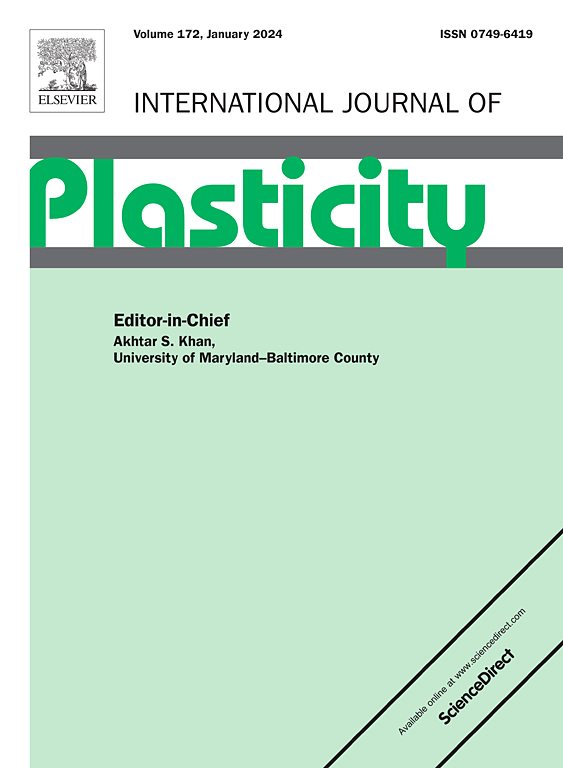Strain-bearing capacity and strain hardening awakened by inter-zone constraint in twin-structured Al0.1CoCrFeNi alloy
IF 12.8
1区 材料科学
Q1 ENGINEERING, MECHANICAL
引用次数: 0
Abstract
Twin networks endow structural metallic materials with unprecedented mechanical properties. However, the understanding of how to utilize the maximum mechanical potential of twin structures remains limited, thus hindering the full performance of twin networks. In this work, the twin networks are embedded within fine grains (FGs) in Al0.1CoCrFeNi alloy to awaken the strain-bearing capacity and strain hardening of twin networks. The experimental results show that the inter‑zone deformation incompatibility generates strong FG constraints that suppress early strain localization in the twin networks, raising the uniform elongation from 3 ± 0.5 % to 27 ± 3 %. Molecular dynamics simulations further verify that the intrinsic deformation mechanism of twin networks changes from necklace-like dislocations to hairpin-like dislocations under inter‑zone constraints. The strain hardening originates not only from the hetero-deformation induced strengthening and hardening, but also from the awakened strain-bearing capacity of twin networks, where the twin networks contribute ∼15 % hardening. These findings highlight the potential for enhancing the strengthening and hardening effects of twin networks by introducing extra constraint effect.
双组织Al0.1CoCrFeNi合金区间约束唤醒的应变承载能力和应变硬化
孪晶网络赋予结构金属材料前所未有的力学性能。然而,对如何利用孪晶结构的最大机械潜力的理解仍然有限,从而阻碍了孪晶网络的充分发挥。本文将孪晶网络嵌入Al0.1CoCrFeNi合金的细晶(FGs)中,唤醒孪晶网络的应变承载能力和应变硬化。实验结果表明,区间变形不相容产生了强烈的FG约束,抑制了孪晶网络中的早期应变局部化,使均匀伸长率从3±0.5%提高到27±3%。分子动力学模拟进一步验证了在区间约束下孪晶网络的固有变形机制由项链型位错转变为发夹型位错。应变硬化不仅源于异质变形诱导的强化和硬化,还源于孪晶网络应变承载能力的觉醒,其中孪晶网络贡献了~ 15%的硬化。这些发现强调了通过引入额外的约束效应来增强孪生网络的强化和硬化效应的潜力。
本文章由计算机程序翻译,如有差异,请以英文原文为准。
求助全文
约1分钟内获得全文
求助全文
来源期刊

International Journal of Plasticity
工程技术-材料科学:综合
CiteScore
15.30
自引率
26.50%
发文量
256
审稿时长
46 days
期刊介绍:
International Journal of Plasticity aims to present original research encompassing all facets of plastic deformation, damage, and fracture behavior in both isotropic and anisotropic solids. This includes exploring the thermodynamics of plasticity and fracture, continuum theory, and macroscopic as well as microscopic phenomena.
Topics of interest span the plastic behavior of single crystals and polycrystalline metals, ceramics, rocks, soils, composites, nanocrystalline and microelectronics materials, shape memory alloys, ferroelectric ceramics, thin films, and polymers. Additionally, the journal covers plasticity aspects of failure and fracture mechanics. Contributions involving significant experimental, numerical, or theoretical advancements that enhance the understanding of the plastic behavior of solids are particularly valued. Papers addressing the modeling of finite nonlinear elastic deformation, bearing similarities to the modeling of plastic deformation, are also welcomed.
 求助内容:
求助内容: 应助结果提醒方式:
应助结果提醒方式:


